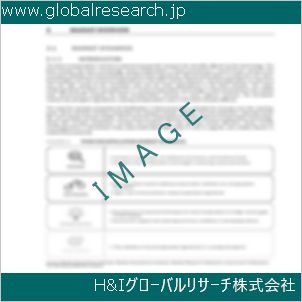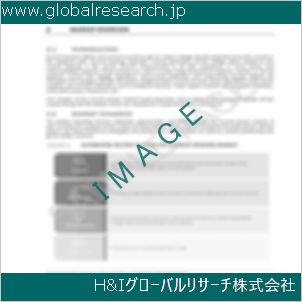Table of Contents
1 Industry Overview of Decylalcohol
1.1 Definition and Specifications of Decylalcohol
1.1.1 Definition of Decylalcohol
1.1.2 Specifications of Decylalcohol
1.2 Classification of Decylalcohol
1.3 Applications of Decylalcohol
1.3.1 Nuclear Application
1.3.2 Non-Nuclear Application
1.4 Industry Chain Structure of Decylalcohol
1.5 Industry Overview and Major Regions Status of Decylalcohol
1.5.1 Industry Overview of Decylalcohol
1.5.2 Global Major Regions Status of Decylalcohol
1.6 Industry Policy Analysis of Decylalcohol
1.7 Industry News Analysis of Decylalcohol
2 Manufacturing Cost Structure Analysis of Decylalcohol
2.1 Raw Material Suppliers and Price Analysis of Decylalcohol
2.2 Equipment Suppliers and Price Analysis of Decylalcohol
2.3 Labor Cost Analysis of Decylalcohol
2.4 Other Costs Analysis of Decylalcohol
2.5 Manufacturing Cost Structure Analysis of Decylalcohol
2.6 Manufacturing Process Analysis of Decylalcohol
3 Technical Data and Manufacturing Plants Analysis of Decylalcohol
3.1 Capacity and Commercial Production Date of Global Decylalcohol Major Manufacturers in 2023
3.2 Manufacturing Plants Distribution of Global Decylalcohol Major Manufacturers in 2023
3.3 R&D Status and Technology Source of Global Decylalcohol Major Manufacturers in 2023
3.4 Raw Materials Sources Analysis of Global Decylalcohol Major Manufacturers in 2023
4 Capacity, Production and Revenue Analysis of Decylalcohol by Regions, Types and Manufacturers
4.1 Global Capacity, Production and Revenue of Decylalcohol by Regions 2019-2024
4.2 Global and Major Regions Capacity, Production, Revenue and Growth Rate of Decylalcohol 2019-2024
4.3 Global Capacity, Production and Revenue of Decylalcohol by Types 2019-2024
4.4 Global Capacity, Production and Revenue of Decylalcohol by Manufacturers 2019-2024
5 Price, Cost, Gross and Gross Margin Analysis of Decylalcohol by Regions, Types and Manufacturers
5.1 Price, Cost, Gross and Gross Margin Analysis of Decylalcohol by Regions 2019-2024
5.2 Price, Cost, Gross and Gross Margin Analysis of Decylalcohol by Types 2019-2024
5.3 Price, Cost, Gross and Gross Margin Analysis of Decylalcohol by Manufacturers 2019-2024
6 Consumption Volume, Consumption Value and Sale Price Analysis of Decylalcohol by Regions, Types and Applications
6.1 Global Consumption Volume and Consumption Value of Decylalcohol by Regions 2019-2024
6.2 Global and Major Regions Consumption Volume, Consumption Value and Growth Rate of Decylalcohol 2019-2024
6.3 Global Consumption Volume and Consumption Value of Decylalcohol by Types 2019-2024
6.4 Global Consumption Volume and Consumption Value of Decylalcohol by Applications 2019-2024
6.5 Sale Price of Decylalcohol by Regions 2019-2024
6.6 Sale Price of Decylalcohol by Types 2019-2024
6.7 Sale Price of Decylalcohol by Applications 2019-2024
6.8 Market Share Analysis of Decylalcohol by Different Sale Price Levels
7 Supply, Import, Export and Consumption Analysis of Decylalcohol
7.1 Supply, Consumption and Gap of Decylalcohol 2019-2024
7.2 Global Capacity, Production, Price, Cost, Revenue, Supply, Import, Export and Consumption of Decylalcohol 2019-2024
7.3 USA Capacity, Production, Price, Cost, Revenue, Supply, Import, Export and Consumption of Decylalcohol 2019-2024
7.4 EU Capacity, Production, Price, Cost, Revenue, Supply, Import, Export and Consumption of Decylalcohol 2019-2024
7.5 China Capacity, Production, Price, Cost, Revenue, Supply, Import, Export and Consumption of Decylalcohol 2019-2024
7.6 Japan Capacity, Production, Price, Cost, Revenue, Supply, Import, Export and Consumption of Decylalcohol 2019-2024
8 Major Manufacturers Analysis of Decylalcohol
8.1 Manufacturer One
8.1.1 Company Profile
8.1.2 Product Picture and Specifications
8.1.2.1 Type I
8.1.2.2 Type II
8.1.2.3 Type III
8.1.3 Capacity, Production, Price, Cost, Gross and Revenue
8.1.4 Contact Information
8.2 Manufacturer Two
8.2.1 Company Profile
8.2.2 Product Picture and Specifications
8.2.2.1 Type I
8.2.2.2 Type II
8.2.2.3 Type III
8.2.3 Capacity, Production, Price, Cost, Gross and Revenue
8.2.4 Contact Information
8.3 Manufacturer Three
8.3.1 Company Profile
8.3.2 Product Picture and Specifications
8.3.2.1 Type I
8.3.2.2 Type II
8.3.2.3 Type III
8.3.3 Capacity, Production, Price, Cost, Gross and Revenue
8.3.4 Contact Information
8.4 Manufacturer Four
8.4.1 Company Profile
8.4.2 Product Picture and Specifications
8.4.2.1 Type I
8.4.2.2 Type II
8.4.2.3 Type III
8.4.3 Capacity, Production, Price, Cost, Gross and Revenue
8.4.4 Contact Information
8.5 Manufacturer Five
8.5.1 Company Profile
8.5.2 Product Picture and Specifications
8.5.2.1 Type I
8.5.2.2 Type II
8.5.2.3 Type III
8.5.3 Capacity, Production, Price, Cost, Gross and Revenue
8.5.4 Contact Information
…
9 Marketing Trader or Distributor Analysis of Decylalcohol
9.1 Marketing Channels Status of Decylalcohol
9.2 Traders or Distributors with Contact Information of Decylalcohol by Regions
9.3 Ex-work Price, Channel Price and End Buyer Price Analysis of Decylalcohol
9.4 Regional Import, Export and Trade Analysis of Decylalcohol
10 Industry Chain Analysis of Decylalcohol
10.1 Upstream Major Raw Materials Suppliers Analysis of Decylalcohol
10.1.1 Major Raw Materials Suppliers with Contact Information Analysis of Decylalcohol
10.1.2 Major Raw Materials Suppliers with Supply Volume Analysis of Decylalcohol by Regions
10.2 Upstream Major Equipment Suppliers Analysis of Decylalcohol
10.2.1 Major Equipment Suppliers with Contact Information Analysis of Decylalcohol
10.2.2 Major Equipment Suppliers with Product Pictures Analysis of Decylalcohol by Regions
10.3 Downstream Major Consumers Analysis of Decylalcohol
10.3.1 Major Consumers with Contact Information Analysis of Decylalcohol
10.3.2 Major Consumers with Consumption Volume Analysis of Decylalcohol by Regions
10.4 Supply Chain Relationship Analysis of Decylalcohol
11 Development Trend of Analysis of Decylalcohol
11.1 Capacity, Production and Revenue Forecast of Decylalcohol by Regions and Types
11.1.1 Global Capacity, Production and Revenue of Decylalcohol by Regions 2024-2029
11.1.2 Global and Major Regions Capacity, Production, Revenue and Growth Rate of Decylalcohol 2024-2029
11.1.3 Global Capacity, Production and Revenue of Decylalcohol by Types 2024-2029
11.2 Consumption Volume and Consumption Value Forecast of Decylalcohol by Regions, Types and Applications
11.2.1 Global Consumption Volume and Consumption Value of Decylalcohol by Regions 2024-2029
11.2.2 Global and Major Regions Consumption Volume, Consumption Value and Growth Rate of Decylalcohol 2024-2029
11.2.3 Global Consumption Volume and Consumption Value of Decylalcohol by Types 2024-2029
11.2.4 Global Consumption Volume and Consumption Value of Decylalcohol by Applications 2024-2029
11.3 Supply, Import, Export and Consumption Forecast of Decylalcohol
11.3.1 Supply, Consumption and Gap of Decylalcohol 2024-2029
11.3.2 Global Capacity, Production, Price, Cost, Revenue, Supply, Import, Export and Consumption of Decylalcohol 2024-2029
11.3.3 USA Capacity, Production, Price, Cost, Revenue, Supply, Import, Export and Consumption of Decylalcohol 2024-2029
11.3.4 EU Capacity, Production, Price, Cost, Revenue, Supply, Import, Export and Consumption of Decylalcohol 2024-2029
11.3.5 China Capacity, Production, Price, Cost, Revenue, Supply, Import, Export and Consumption of Decylalcohol 2024-2029
11.3.6 Japan Capacity, Production, Price, Cost, Revenue, Supply, Import, Export and Consumption of Decylalcohol 2024-2029
12 New Project Investment Feasibility Analysis of Decylalcohol
12.1 New Project SWOT Analysis of Decylalcohol
12.2 New Project Investment Feasibility Analysis of Decylalcohol
13 Conclusion of the Global Decylalcohol (CAS 112-30-1) Industry 2024 Market Research Report
| ※参考情報 デシルアルコール(Decyl alcohol)は、化学式C10H22Oを持つ飽和脂肪アルコールの一種で、CAS番号は112-30-1です。この化合物は主に、長鎖のアルキル基を持つ一価のアルコールであり、炭素の数からも分かるように、10個の炭素原子から構成される直鎖状の分子となっています。デシルアルコールは無色または淡黄色の液体であり、特有の甘い香りを発することが特徴です。 デシルアルコールは、工業的には界面活性剤、エマルジョン安定剤、溶剤など、多岐にわたる用途を持っています。化粧品業界では、乳液やクリームの成分として使われることが多く、その保湿効果や感触向上に寄与しています。また、デシルアルコールのエステル化反応によって、さまざまな香料やフレグランスの合成にも利用されます。これにより、化粧品やパーソナルケア製品において重要な役割を果たします。 デシルアルコールの特徴の一つは、その親水性と疎水性のバランスです。この特性により、デシルアルコールは水と油の相互作用を調整し、エマルジョン(乳化)の安定化を助けます。界面活性剤や乳化剤として使用される際には、油性成分を水性成分に均一に分散させることができるため、クリームやロションの製造において非常に価値のある成分となります。 デシルアルコールは、類似の長鎖アルコール群に属する化合物と同様に、特定の生理活性を持つことが研究されています。これにより、例えば抗菌作用や抗炎症作用など、さまざまな生物学的活性を示す可能性が探求されていますが、具体的なデータは現在も研究が進行中です。 デシルアルコールにはいくつかの関連技術や生産方法があります。一般的には、ナフサや石油から得られるオレフィンを原料として、加水分解や水素化などのプロセスを通じて合成されます。この合成過程では、触媒反応が多く用いられ、効率的に良質なデシルアルコールを得ることが可能です。 さらに、デシルアルコールは生分解性を持ち、環境に優しい選択肢としても評価されています。環境への配慮が高まる中、化学製品の選択において持続可能性が重視されるようになってきています。このため、デシルアルコールの需要は今後も増加する見込みです。 これらの特性から、デシルアルコールは化学工業特に化粧品やパーソナルケア製品の分野において非常に重要な役割を果たしています。その用途の多様性により、デシルアルコールは市場での需要が高く、これからも注目の化合物として位置付けられるでしょう。 デシルアルコールが使用される主な製品としては、ボディーローション、シャンプー、コンディショナー、サンスクリーン、ハンドクリームなどがあります。また、家庭用清掃剤や業務用洗剤にも使用され、油汚れを効果的に除去するための有効成分として機能します。これらの用途においては、デシルアルコールの特性を活かした製品設計が行われています。 まとめると、デシルアルコールは10炭素の飽和脂肪アルコールであり、主に化粧品や清掃剤の分野で広く利用される成分です。その生理活性、界面活性剤としての特性、そして環境への配慮から、今後もにわたって重要な役割を果たし続けることが期待されています。状況に応じたさまざまな用途での応用が可能であり、持続的な開発や新しい技術の探求によって、さらなる可能性が広がるでしょう。 |
❖ 免責事項 ❖
http://www.globalresearch.jp/disclaimer












